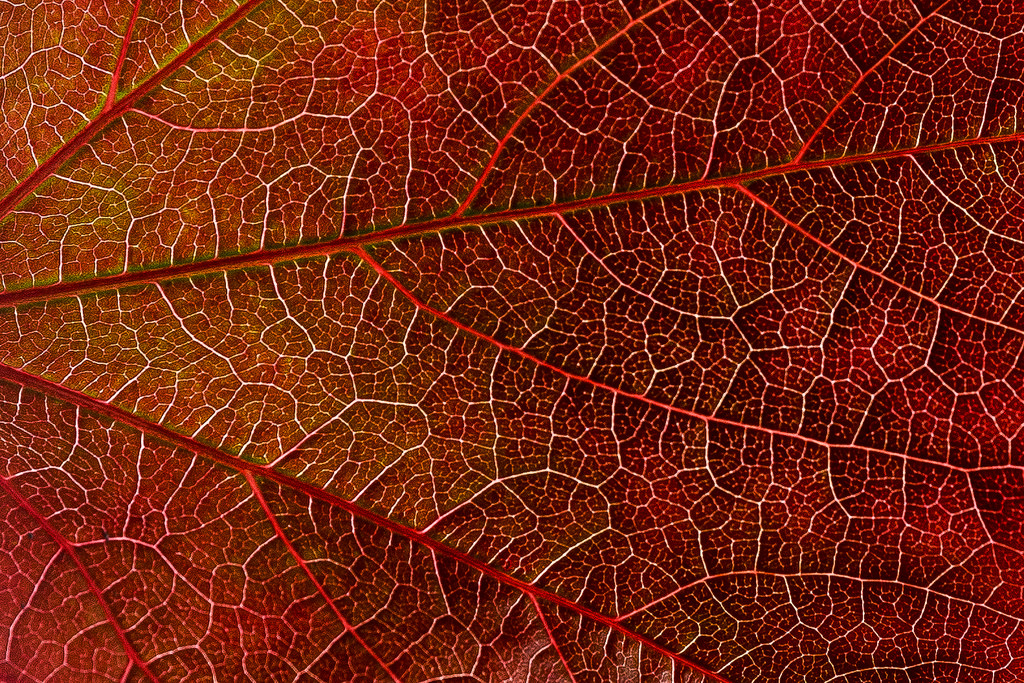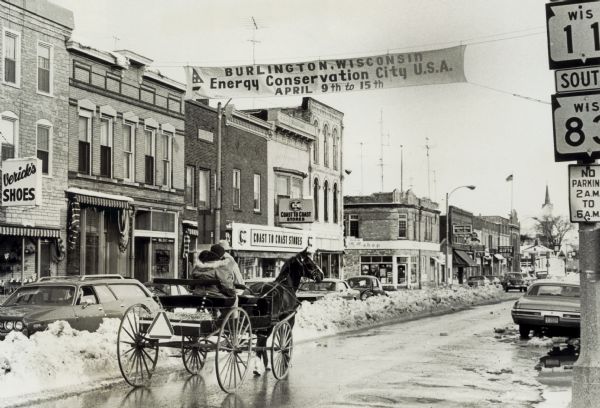
Today is the 41st annual Earth Day, one of my favorite days of the year. Today I want to tell part of the story of its origins, its importance, and why I treasure the values that underlie its celebration and observance.
Earth Day is the child of former Wisconsin Senator Gaylord Nelson (see additional bios here and here). In 1962, Nelson, then in the last year of his first term as Governor of Wisconsin, won election (as a Democrat) to the United States Senate, defeating 78 year old Alexander Wiley, a four-term Senator who was, at the time, the longest tenured Republican in the Senate. According to David Webber, a political science professor at the University of Missouri, Nelson had gained prominence during his term as governor for his enthusiastic and innovative support for environmental and conservation issues. Webber writes:
In the late 1950s, a crucial issues facing Wisconsin was the great demand for outdoor recreation. A 1959 study found that over 25 percent of Chicago residents took an over-night vacation trip to Wisconsin. Governor Nelson proposed a bold plan to expand the state’s conservation efforts. In August 1961, Nelson won legislative approval in 1961 of the Outdoor Resources Action Program financed by a one-cent-per-pack cigarette tax to fund the state acquisition of parks and wetlands. This 10-year program used “conservation easements” to purchase land rights to private property. Instead of actually buying the land, a conservation easements pays the property owner to preserve land as wilderness. The Outdoor Resources Action Program provided for recreation areas throughout the state for use as wildlife areas and public parks. While governor, Nelson proposed other environmental measure such as regulating detergents that were making their way to Wisconsin’s rivers and streams.
Nelson carried this concern for environmental issues directly into his new role as a US Senator. In an article he wrote for American Heritage Magazine in 1993, Nelson revealed that the idea for Earth Day
evolved over a period of seven years starting in 1962. For several years, it had been troubling me that the state of our environment was simply a non-issue in the politics of the country. Finally, in November 1962, an idea occurred to me that was, I thought, a virtual cinch to put the environment into the political “limelight” once and for all. The idea was to persuade President Kennedy to give visibility to this issue by going on a national conservation tour. I flew to Washington to discuss the proposal with Attorney General Robert Kennedy, who liked the idea. So did the President. The President began his five-day, eleven-state conservation tour in September 1963. For many reasons the tour did not succeed in putting the issue onto the national political agenda. …
After President Kennedy’s tour, I still hoped for some idea that would thrust the environment into the political mainstream. Six years would pass before the idea that became Earth Day occurred to me while on a conservation speaking tour out West in the summer of 1969. At the time, anti-Vietnam War demonstrations, called “teach-ins,” had spread to college campuses all across the nation. Suddenly, the idea occurred to me – why not organize a huge grassroots protest over what was happening to our environment?
Nelson did organize these teach ins, they were wildly successful, and in September of 1969, at a conference in Seattle, Nelson announced his plans for nationwide grassroots demonstrations in the following spring on behalf of the environment. These events would be coordinated to take place on April 22, 1970 and would be known as Earth Day. Following this announcement, Nelson remembers
The response was electric. It took off like gangbusters. Telegrams, letters, and telephone inquiries poured in from all across the country. The American people finally had a forum to express its concern about what was happening to the land, rivers, lakes, and air – and they did so with spectacular exuberance. For the next four months, two members of my Senate staff, Linda Billings and John Heritage, managed Earth Day affairs out of my Senate office.
Aided in part by the appearance of a lengthy front page feature by Gladwin Hill in the November 30, 1969 issue of NY Times on the rise of environmental activism on college campuses around the country, Nelson quickly discovered that “grassroots activities had ballooned beyond the capacity of my U.S. Senate office staff to keep up with the telephone calls, paper work, inquiries, etc. In mid-January, three months before Earth Day, John Gardner, Founder of Common Cause, provided temporary space for a Washington, D.C. headquarters.” Nelson appointed twenty-five year old Denis Hayes as coordinator of activities and staffed the office with college students. On April 21st, the evening before the schedule Earth Day celebrations, Nelson addressed an audience in the Cooley Auditorium of Milwaukee Technical College and laid out his environmental vision in a compelling and inspiring fashion. You can see video of this speech here.

The following day millions of people gathered across the United States to advocate on behalf of their environmental concerns and to express their love of the planet and their desire that we (and our governments, businesses, and other institutions) do more to protect, preserve, and improve its health. The first Earth Day was a massive success, and in the 40+ years since it’s first observance, it has become a global phenomenon, uniting people across many cultures, languages, and backgrounds in the common cause of greater care for our shared planet, deeper awareness of pressing environmental and social concerns, and conversations about possible ways to repair the damage we have wrought upon the Earth. In his 1993 reflections on the origins of Earth Day Nelson asserted that in his opinion the first Earth Day was so wildly successful
because of the spontaneous response at the grassroots level. We had neither the time nor resources to organize 20 million demonstrators and the thousands of schools and local communities that participated. That was the remarkable thing about Earth Day. It organized itself.
I love this story and the possibility that it holds out for similar action in our time and generations from now.
If you’re curious to know more about Gaylord Nelson or Earth Day, I have three recommendations. The first is this fantastic Nelson Institute for Environmental Studies site, which has outstanding pages devoted to Nelson’s life story as well as the story of Earth Day. This very impressive and incredibly informative site was built through the collaborative efforts of history Ph.D. student Brian Hamilton (whom I first met as a fellow student in a seminar led by Bill Cronon in which we helped build this Learning Historical Research site), webmaster Melanie McCalmont of Synchronous Publications, UW Professors Gregg Mitman and Bill Cronon, and consulting scholar Adam Rome, who is currently at work on a book about Earth Day, which will published later this year by Hill & Wang. You can get lost in here and spend days or weeks immersed in rich, exciting, and deeply interesting material.
I’d also recommend the PBS American Experience film Earth Days, which you can watch (or read the transcript) from their website. The site also includes a host of supporting materials, including a teacher’s guide.

The other recommendation I’d make would be checking out some of the primary historical documents collected by The Wisconsin Historical Society. In addition to housing the incredible Gaylord Nelson Papers, 1954-2006 collection, the WHS has collected an enormous number of documents related to Nelson and his early Earth Day plans, including this newsletter announcing Nelson’s plans for the enviromental teach-ins described in the quote above and this newsletter announcing the successes of the first Earth Day Celebration on April 22, 1970 and heralding the beginning of a new “mass movement”. My favorite detail? It contains this nugget: the first Earth Day in Madison, Wisconsin was observed “at sunrise over Lake Mendota with a Sanskrit invocation and a reading of the last chapter of the Book of Genesis [presumably Genesis 50] with an apology to God for man’s assaults on the landscape.” Who knew?

So, more than 4o years on, what does Earth Day mean today? What ought we to be demonstrating about, protesting against, advocating for, rejoicing over? Twenty years ago, Nelson himself tried to answer the question in a statement at the Madison Beyond War Ceremony. Last year, Ruth Conniff, political editor at The Progressive, offered some thoughts on this question, and this year, Maude Barlow and Shannon Biggs have shared their ideas in the same publication.
My feelings on this question are numerous. I love the earth, and want it to be healthy. I want to do my part to honor, celebrate, and respect the environment in the places that I inhabit, as well as the places which are affected by the products that I consume–those regions of the earth which are directly affected by my presence on earth and the choices I make as a human actor. In honor of Earth Day, I’m wearing green, pledging publicly to be more vocal in my support of wise environmental policies and better consumer decisions in the coming year (and beyond), and planning to join several of my friends this evening at the opening of Heather Swan’s gorgeous art exhibit: Loss, Longing, and Belonging: Inhabiting the Human Body in an Endangered World, sponsored by the Center for Culture, History, and the Environment. What are you doing for the earth and its many inhabitants this Earth Day?

